Cheyenne Corp. was organized on January 1, 2017. It is authorized to issue 21,000 shares of 7%, $53 par value preferred stock and 454,000 shares of no-par common stock with a stated value of $2 per share. The following stock transactions were completed during the first year. Jan. 10 Issued 67,000 shares of common stock for cash at $4 per share. Mar. 1 Issued 1,140 shares of preferred stock for cash at $56 per share. May 1 Issued 112,000 shares of common stock for cash at $7 per share. Sept. 1 Issued 4,400 shares of common stock for cash at $8 per share. Nov. 1 Issued 2,400 shares of preferred stock for cash at $56 per share. Prepare the paid-in capital portion of the stockholders’ equity section at December 31, 2017. CHEYENNE CORP.Partial Balance Sheetchoose the accounting period December 31, 2017For the Month Ended December 31, 2017For the Year Ended December 31, 2017 select an opening section name Current AssetsCurrent LiabilitiesIntangible AssetsLong-term InvestmentsLong-term LiabilitiesProperty, Plant and EquipmentStockholders' EquityTotal AssetsTotal Current AssetsTotal Current LiabilitiesTotal Intangible AssetsTotal LiabilitiesTotal Liabilities and Stockholders' EquityTotal Long-term InvestmentsTotal Long-term LiabilitiesTotal Property, Plant and EquipmentAdditional Paid-in CapitalPaid-in CapitalCapital StockTotal Capital StockTotal Paid-in CapitalTotal Paid-in Capital and Retained EarningsTotal Stockholders’ EquityTotal Additional Paid-in Capital select an opening subsection name Current AssetsCurrent LiabilitiesIntangible AssetsLong-term InvestmentsLong-term LiabilitiesProperty, Plant and EquipmentStockholders' EquityTotal AssetsTotal Current AssetsTotal Current LiabilitiesTotal Intangible AssetsTotal LiabilitiesTotal Liabilities and Stockholders' EquityTotal Long-term InvestmentsTotal Long-term LiabilitiesTotal Property, Plant and EquipmentAdditional Paid-in CapitalPaid-in CapitalCapital StockTotal Capital StockTotal Paid-in CapitalTotal Paid-in Capital and Retained EarningsTotal Stockholders’ EquityTotal Additional Paid-in Capital select a name of the subordinate part one of this subsection Current AssetsCurrent LiabilitiesIntangible AssetsLong-term InvestmentsLong-term LiabilitiesProperty, Plant and EquipmentStockholders' EquityTotal AssetsTotal Current AssetsTotal Current LiabilitiesTotal Intangible AssetsTotal LiabilitiesTotal Liabilities and Stockholders' EquityTotal Long-term InvestmentsTotal Long-term LiabilitiesTotal Property, Plant and EquipmentAdditional Paid-in CapitalPaid-in CapitalCapital StockTotal Capital StockTotal Paid-in CapitalTotal Paid-in Capital and Retained EarningsTotal Stockholders’ EquityTotal Additional Paid-in Capital enter a balance sheet item $enter a dollar amount enter a balance sheet item enter a dollar amount select a summarizing line for the subordinate part one of this subsection Current Assets Current Liabilities Intangible Assets Long-term Investments Long-term Liabilities Property, Plant and Equipment Stockholders' Equity Total Assets Total Current Assets Total Current Liabilities Total Intangible Assets Total Liabilities Total Liabilities and Stockholders' Equity Total Long-term Investments Total Long-term Liabilities Total Property, Plant and Equipment Additional Paid-in Capital Paid-in Capital Capital Stock Total Capital Stock Total Paid-in Capital Total Paid-in Capital and Retained Earnings Total Stockholders’ Equity Total Additional Paid-in Capital $enter a subtotal of the two previous amounts select a name of the subordinate part two of this subsection Current AssetsCurrent LiabilitiesIntangible AssetsLong-term InvestmentsLong-term LiabilitiesProperty, Plant and EquipmentStockholders' EquityTotal AssetsTotal Current AssetsTotal Current LiabilitiesTotal Intangible AssetsTotal LiabilitiesTotal Liabilities and Stockholders' EquityTotal Long-term InvestmentsTotal Long-term LiabilitiesTotal Property, Plant and EquipmentAdditional Paid-in CapitalPaid-in CapitalCapital StockTotal Capital StockTotal Paid-in CapitalTotal Paid-in Capital and Retained EarningsTotal Stockholders’ EquityTotal Additional Paid-in Capital enter a balance sheet item enter a dollar amount enter a balance sheet item enter a dollar amount select a summarizing line for the subordinate part two of this subsection Current Assets Current Liabilities Intangible Assets Long-l Long-term Investments Total Long-term Liabilities Total Property, Plant and tal Stockholders’ Equity Total Additional Paid-in Capital enter a subtotal of the two previous amounts in Capital Capital Stock Total Capital Stock Total Paid-in Capital Total Paid-in Capital and Retained Earnings Total Stockholders’ Equity Total Additional Paid-in Capital $enter a total amount for this subsection
Cheyenne Corp. was organized on January 1, 2017. It is authorized to issue 21,000 shares of 7%, $53 par value preferred stock and 454,000 shares of no-par common stock with a stated value of $2 per share. The following stock transactions were completed during the first year. Jan. 10 Issued 67,000 shares of common stock for cash at $4 per share. Mar. 1 Issued 1,140 shares of preferred stock for cash at $56 per share. May 1 Issued 112,000 shares of common stock for cash at $7 per share. Sept. 1 Issued 4,400 shares of common stock for cash at $8 per share. Nov. 1 Issued 2,400 shares of preferred stock for cash at $56 per share. Prepare the paid-in capital portion of the stockholders’ equity section at December 31, 2017. CHEYENNE CORP.Partial Balance Sheetchoose the accounting period December 31, 2017For the Month Ended December 31, 2017For the Year Ended December 31, 2017 select an opening section name Current AssetsCurrent LiabilitiesIntangible AssetsLong-term InvestmentsLong-term LiabilitiesProperty, Plant and EquipmentStockholders' EquityTotal AssetsTotal Current AssetsTotal Current LiabilitiesTotal Intangible AssetsTotal LiabilitiesTotal Liabilities and Stockholders' EquityTotal Long-term InvestmentsTotal Long-term LiabilitiesTotal Property, Plant and EquipmentAdditional Paid-in CapitalPaid-in CapitalCapital StockTotal Capital StockTotal Paid-in CapitalTotal Paid-in Capital and Retained EarningsTotal Stockholders’ EquityTotal Additional Paid-in Capital select an opening subsection name Current AssetsCurrent LiabilitiesIntangible AssetsLong-term InvestmentsLong-term LiabilitiesProperty, Plant and EquipmentStockholders' EquityTotal AssetsTotal Current AssetsTotal Current LiabilitiesTotal Intangible AssetsTotal LiabilitiesTotal Liabilities and Stockholders' EquityTotal Long-term InvestmentsTotal Long-term LiabilitiesTotal Property, Plant and EquipmentAdditional Paid-in CapitalPaid-in CapitalCapital StockTotal Capital StockTotal Paid-in CapitalTotal Paid-in Capital and Retained EarningsTotal Stockholders’ EquityTotal Additional Paid-in Capital select a name of the subordinate part one of this subsection Current AssetsCurrent LiabilitiesIntangible AssetsLong-term InvestmentsLong-term LiabilitiesProperty, Plant and EquipmentStockholders' EquityTotal AssetsTotal Current AssetsTotal Current LiabilitiesTotal Intangible AssetsTotal LiabilitiesTotal Liabilities and Stockholders' EquityTotal Long-term InvestmentsTotal Long-term LiabilitiesTotal Property, Plant and EquipmentAdditional Paid-in CapitalPaid-in CapitalCapital StockTotal Capital StockTotal Paid-in CapitalTotal Paid-in Capital and Retained EarningsTotal Stockholders’ EquityTotal Additional Paid-in Capital enter a balance sheet item $enter a dollar amount enter a balance sheet item enter a dollar amount select a summarizing line for the subordinate part one of this subsection Current Assets Current Liabilities Intangible Assets Long-term Investments Long-term Liabilities Property, Plant and Equipment Stockholders' Equity Total Assets Total Current Assets Total Current Liabilities Total Intangible Assets Total Liabilities Total Liabilities and Stockholders' Equity Total Long-term Investments Total Long-term Liabilities Total Property, Plant and Equipment Additional Paid-in Capital Paid-in Capital Capital Stock Total Capital Stock Total Paid-in Capital Total Paid-in Capital and Retained Earnings Total Stockholders’ Equity Total Additional Paid-in Capital $enter a subtotal of the two previous amounts select a name of the subordinate part two of this subsection Current AssetsCurrent LiabilitiesIntangible AssetsLong-term InvestmentsLong-term LiabilitiesProperty, Plant and EquipmentStockholders' EquityTotal AssetsTotal Current AssetsTotal Current LiabilitiesTotal Intangible AssetsTotal LiabilitiesTotal Liabilities and Stockholders' EquityTotal Long-term InvestmentsTotal Long-term LiabilitiesTotal Property, Plant and EquipmentAdditional Paid-in CapitalPaid-in CapitalCapital StockTotal Capital StockTotal Paid-in CapitalTotal Paid-in Capital and Retained EarningsTotal Stockholders’ EquityTotal Additional Paid-in Capital enter a balance sheet item enter a dollar amount enter a balance sheet item enter a dollar amount select a summarizing line for the subordinate part two of this subsection Current Assets Current Liabilities Intangible Assets Long-l Long-term Investments Total Long-term Liabilities Total Property, Plant and tal Stockholders’ Equity Total Additional Paid-in Capital enter a subtotal of the two previous amounts in Capital Capital Stock Total Capital Stock Total Paid-in Capital Total Paid-in Capital and Retained Earnings Total Stockholders’ Equity Total Additional Paid-in Capital $enter a total amount for this subsection
Financial Accounting: The Impact on Decision Makers
10th Edition
ISBN:9781305654174
Author:Gary A. Porter, Curtis L. Norton
Publisher:Gary A. Porter, Curtis L. Norton
Chapter11: Stockholders' Equity
Section: Chapter Questions
Problem 11.6E
Related questions
Question
Cheyenne Corp. was organized on January 1, 2017. It is authorized to issue 21,000 shares of 7%, $53 par value
| Jan. | 10 | Issued 67,000 shares of common stock for cash at $4 per share. | |
| Mar. | 1 | Issued 1,140 shares of preferred stock for cash at $56 per share. | |
| May | 1 | Issued 112,000 shares of common stock for cash at $7 per share. | |
| Sept. | 1 | Issued 4,400 shares of common stock for cash at $8 per share. | |
| Nov. | 1 |
Issued 2,400 shares of preferred stock for cash at $56 per share.
|
Prepare the paid-in capital portion of the
|
CHEYENNE CORP.
Partial Balance Sheet choose the accounting period December 31, 2017For the Month Ended December 31, 2017For the Year Ended December 31, 2017
|
||||||
|---|---|---|---|---|---|---|
| select an opening section name
Current AssetsCurrent LiabilitiesIntangible AssetsLong-term InvestmentsLong-term LiabilitiesProperty, Plant and EquipmentStockholders' EquityTotal AssetsTotal Current AssetsTotal Current LiabilitiesTotal Intangible AssetsTotal LiabilitiesTotal Liabilities and Stockholders' EquityTotal Long-term InvestmentsTotal Long-term LiabilitiesTotal Property, Plant and EquipmentAdditional Paid-in CapitalPaid-in CapitalCapital StockTotal Capital StockTotal Paid-in CapitalTotal Paid-in Capital and Retained EarningsTotal Stockholders’ EquityTotal Additional Paid-in Capital
|
||||||
| select an opening subsection name
Current AssetsCurrent LiabilitiesIntangible AssetsLong-term InvestmentsLong-term LiabilitiesProperty, Plant and EquipmentStockholders' EquityTotal AssetsTotal Current AssetsTotal Current LiabilitiesTotal Intangible AssetsTotal LiabilitiesTotal Liabilities and Stockholders' EquityTotal Long-term InvestmentsTotal Long-term LiabilitiesTotal Property, Plant and EquipmentAdditional Paid-in CapitalPaid-in CapitalCapital StockTotal Capital StockTotal Paid-in CapitalTotal Paid-in Capital and Retained EarningsTotal Stockholders’ EquityTotal Additional Paid-in Capital
|
||||||
| select a name of the subordinate part one of this subsection
Current AssetsCurrent LiabilitiesIntangible AssetsLong-term InvestmentsLong-term LiabilitiesProperty, Plant and EquipmentStockholders' EquityTotal AssetsTotal Current AssetsTotal Current LiabilitiesTotal Intangible AssetsTotal LiabilitiesTotal Liabilities and Stockholders' EquityTotal Long-term InvestmentsTotal Long-term LiabilitiesTotal Property, Plant and EquipmentAdditional Paid-in CapitalPaid-in CapitalCapital StockTotal Capital StockTotal Paid-in CapitalTotal Paid-in Capital and Retained EarningsTotal Stockholders’ EquityTotal Additional Paid-in Capital
|
||||||
|
enter a balance sheet item
|
$enter a dollar amount
|
|||||
|
enter a balance sheet item
|
enter a dollar amount
|
|||||
| select a summarizing line for the subordinate part one of this subsection
Current Assets Current Liabilities Intangible Assets Long-term Investments Long-term Liabilities Property, Plant and Equipment Stockholders' Equity Total Assets Total Current Assets Total Current Liabilities Total Intangible Assets Total Liabilities Total Liabilities and Stockholders' Equity Total Long-term Investments Total Long-term Liabilities Total Property, Plant and Equipment Additional Paid-in Capital Paid-in Capital Capital Stock Total Capital Stock Total Paid-in Capital Total Paid-in Capital and
|
|
$enter a subtotal of the two previous amounts
|
||||
| select a name of the subordinate part two of this subsection
Current AssetsCurrent LiabilitiesIntangible AssetsLong-term InvestmentsLong-term LiabilitiesProperty, Plant and EquipmentStockholders' EquityTotal AssetsTotal Current AssetsTotal Current LiabilitiesTotal Intangible AssetsTotal LiabilitiesTotal Liabilities and Stockholders' EquityTotal Long-term InvestmentsTotal Long-term LiabilitiesTotal Property, Plant and EquipmentAdditional Paid-in CapitalPaid-in CapitalCapital StockTotal Capital StockTotal Paid-in CapitalTotal Paid-in Capital and Retained EarningsTotal Stockholders’ EquityTotal Additional Paid-in Capital
|
||||||
| enter a balance sheet item
|
|
enter a dollar amount
|
|
|||
| enter a balance sheet item
|
|
enter a dollar amount
|
|
|||
| select a summarizing line for the subordinate part two of this subsection
Current Assets Current Liabilities Intangible Assets Long-l Long-term Investments Total Long-term Liabilities Total Property, Plant and tal Stockholders’ Equity Total Additional Paid-in Capital
|
enter a subtotal of the two previous amounts
|
|||||
|
in Capital Capital Stock Total Capital Stock Total Paid-in Capital Total Paid-in Capital and Retained Earnings Total Stockholders’ Equity Total Additional Paid-in Capital
|
$enter a total amount for this subsection
|
Expert Solution
This question has been solved!
Explore an expertly crafted, step-by-step solution for a thorough understanding of key concepts.
This is a popular solution!
Trending now
This is a popular solution!
Step by step
Solved in 3 steps with 2 images

Knowledge Booster
Learn more about
Need a deep-dive on the concept behind this application? Look no further. Learn more about this topic, accounting and related others by exploring similar questions and additional content below.Recommended textbooks for you
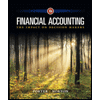
Financial Accounting: The Impact on Decision Make…
Accounting
ISBN:
9781305654174
Author:
Gary A. Porter, Curtis L. Norton
Publisher:
Cengage Learning
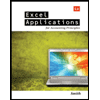
Excel Applications for Accounting Principles
Accounting
ISBN:
9781111581565
Author:
Gaylord N. Smith
Publisher:
Cengage Learning
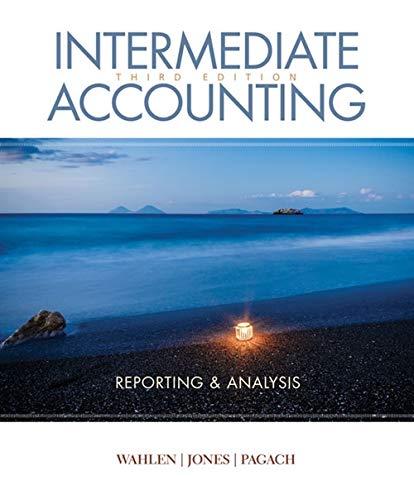
Intermediate Accounting: Reporting And Analysis
Accounting
ISBN:
9781337788281
Author:
James M. Wahlen, Jefferson P. Jones, Donald Pagach
Publisher:
Cengage Learning

Financial Accounting: The Impact on Decision Make…
Accounting
ISBN:
9781305654174
Author:
Gary A. Porter, Curtis L. Norton
Publisher:
Cengage Learning

Excel Applications for Accounting Principles
Accounting
ISBN:
9781111581565
Author:
Gaylord N. Smith
Publisher:
Cengage Learning

Intermediate Accounting: Reporting And Analysis
Accounting
ISBN:
9781337788281
Author:
James M. Wahlen, Jefferson P. Jones, Donald Pagach
Publisher:
Cengage Learning
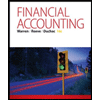
Financial Accounting
Accounting
ISBN:
9781305088436
Author:
Carl Warren, Jim Reeve, Jonathan Duchac
Publisher:
Cengage Learning
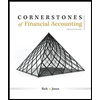
Cornerstones of Financial Accounting
Accounting
ISBN:
9781337690881
Author:
Jay Rich, Jeff Jones
Publisher:
Cengage Learning

Principles of Accounting Volume 1
Accounting
ISBN:
9781947172685
Author:
OpenStax
Publisher:
OpenStax College